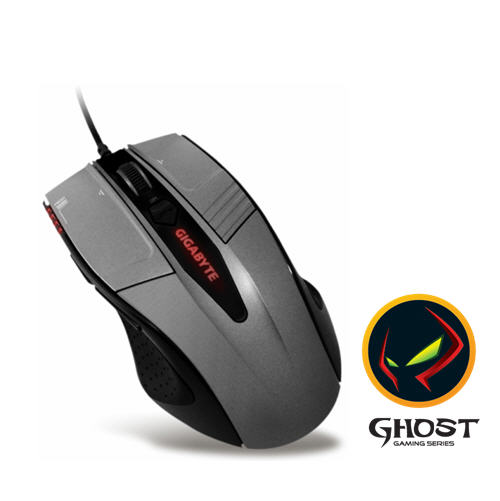Gigabyte GM-M8000 Mouse - A GHOST Story
by Gary Key on June 15, 2009 3:00 PM EST- Posted in
- Smartphones
- Mobile
We had a very interesting package show up at the front door a couple of weeks ago. No, it was not our new supply order from ShamWoW or even that P55/Lynnfield box we recently reviewed. It was a mouse designed and built by a motherboard company. Specifically, it was from Gigabyte and included a keyboard we will discuss later. Of course, there were a couple of motherboards and video cards in the box but our attention was naturally drawn to the new shiny trinket in the tricked out package.
Normally a mouse would not elicit such excitement but since I change mice about as often the US elects a Democratic president one could easily forgive me for being a bit too eager to give this product a through thrashing. Honestly, I had no idea that Gigabyte even offered mice but after checking out their PC peripheral page, I was impressed with the range of products offered. In fact, Gigabyte offers a total of nine mice ranging from an entry level wireless optical mouse to several gaming mice including our GM-M8000 sample.

The GM-M8000 is part of Gigabyte’s new GHOST gaming series of products. This particular mouse features the AVAGO 6090 Laser sensor featuring adjustable sensitivity from 400 dpi to 4000 dpi, Gigabyte’s GHOST Engine featuring 8KB of onboard memory, GHOST software suite, 16-bit wide data path, five independently programmable buttons, four level on-the-fly DPI adjustment, USB report rate tuning, and an adjustable weight system with 38 grams of metal weights.
It all sounds impressive; the key is if this mouse actually works as advertised. So, let’s find out if this GHOST is the real thing or just another Casper wannabe.










44 Comments
View All Comments
jordanclock - Monday, June 15, 2009 - link
Mayhaps you could set up something like this fellow did for objective mouse testing: http://www.esreality.com/?a=longpost&id=126567...">http://www.esreality.com/?a=longpost&id=126567... .Seems like an adequate method to me. A better rig would be able to test multiple directions, but I think that the turn-table method would give a fair representation of the "raw performance" of a mouse.
dvinnen - Tuesday, June 16, 2009 - link
I was going to post the same article.I don't like it when hardware sites review mice as they generally only give a personal opinion on the mouse. While that can be helpful for the feel of the mouse it doesn't truly address the performance of the mouse and seem to harp on the useless features of the mouse. If you are a serious gamer you should be more concern about negative acceleration and acceleration in general then a weight system or on the fly DPI switching.
In the article you talk about the software and the fine-tune DPI changing but ignore the fact that in all likely hood that it is simply adjusting the courser speed which is bad. The reason you have high DPI is so that speed can increase without the increase in aliasing and skipping and loss in precision. This happens when you simply just increase the speed. Who would actually want different X and Y axis speeds anyways?
Generally you want as low of sensitivity as you can stand while in a game for increase aiming precision with no positive acceleration (it screws with consistency of one swipe of your hand) and absolutely no negative acceleration (same problem with consistency but worse as if you swipe to fast the mouse won't track at all and your courser won't move.).
MamiyaOtaru - Tuesday, June 16, 2009 - link
I was going to mention the same thing. DPI over 1600 is overkill for almost anyone, super super high sensitivy gamers excepted. Max speed with perfect control is far more important, and at least at the time of the esreality article, lasers weren't up to snuff in that department.I want to know if a mouse will handle fast movements accurately, not how I can cover 3 screen widths of pixels in one inch.
goinginstyle - Monday, June 15, 2009 - link
Really liked the review and the ZZ Top reference. I actually know something more about this mouse than what is on the Gigabyte website and some other one page reviews. Is there anyway to test the actual USB report rates on an AMD750 chipset to see if there are still lags that were present on the SB600?